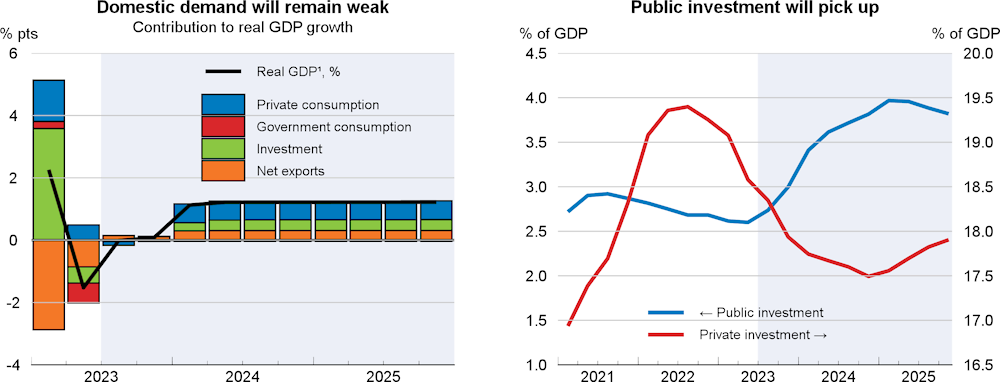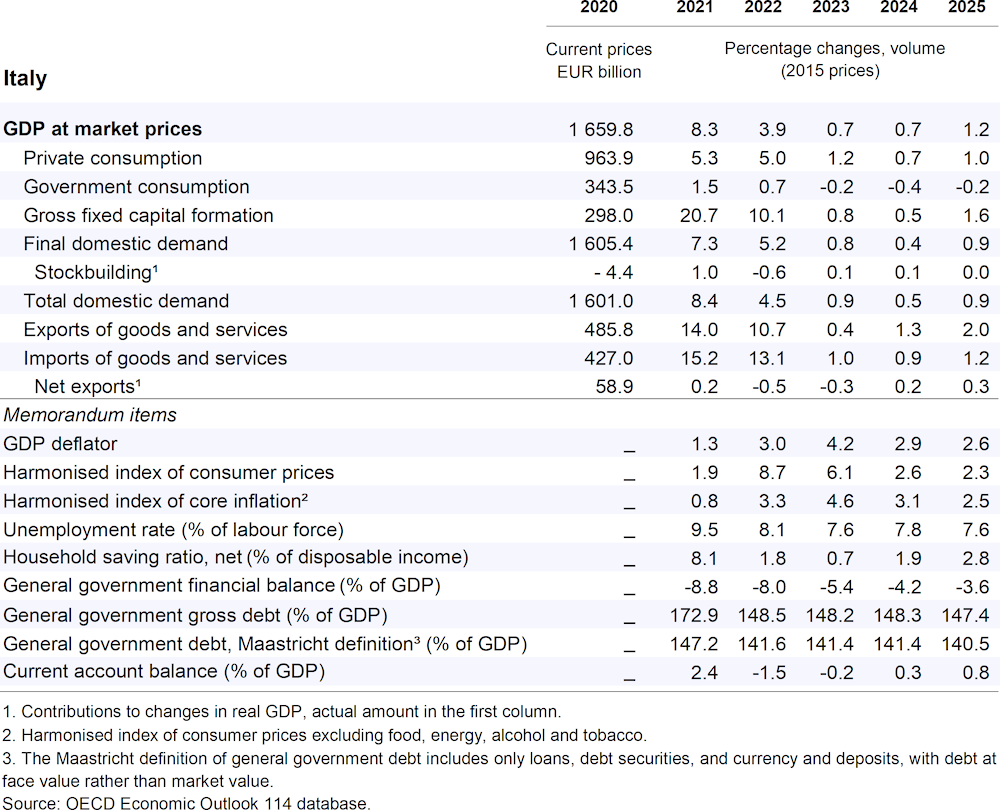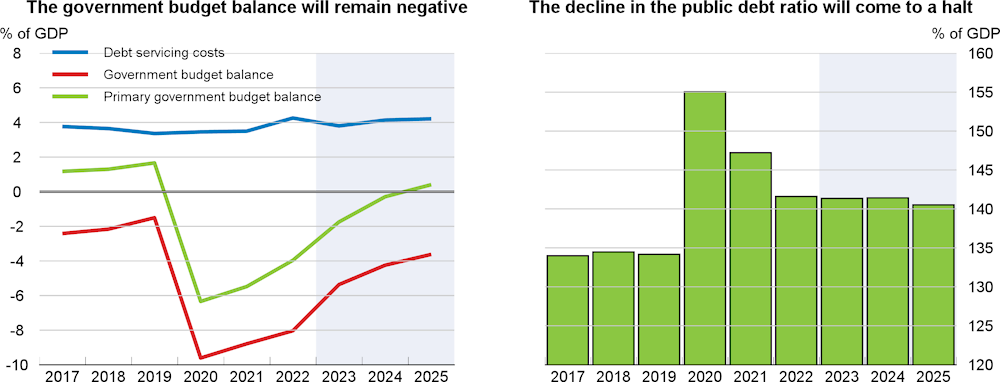GDP growth is expected to slow to 0.7% in both 2023 and 2024, before picking up modestly to 1.2% in 2025. Low wage growth and high inflation have eroded real incomes, financial conditions have tightened, and most of the exceptional fiscal support related to the energy crisis has been withdrawn, weighing on private consumption and investment. The projected decline of inflation, targeted income tax cuts and the pick-up in public investment related to New Generation EU (NGEU) funds will only partly offset these headwinds. Risks are tilted to the downside. The main downside risk is a larger-than-expected tightening of financial conditions due to tighter euro area monetary policy or an increase in the risk premium on Italian government securities. On the upside, a significant pick-up in public investment related to the National Recovery and Resilience Plan (NRRP) could boost growth in 2024 and 2025.
The effects of monetary policy tightening have started to kick in, while fiscal support to households and businesses to tackle the energy crisis has been scaled back, although the latter is broadly offset by targeted income tax cuts and higher NRRP spending. The broadly neutral stance of fiscal policy will limit the slowdown in growth, but there is room to improve the budget balance more rapidly than currently planned to put the public finances on a more prudent path. Public spending needs to be contained, including by looking for options to reduce pension expenditure and raising the ambition of spending reviews. The speedy implementation of public investment plans and structural reforms in the NRRP will be key to sustain growth and reduce the debt ratio.



